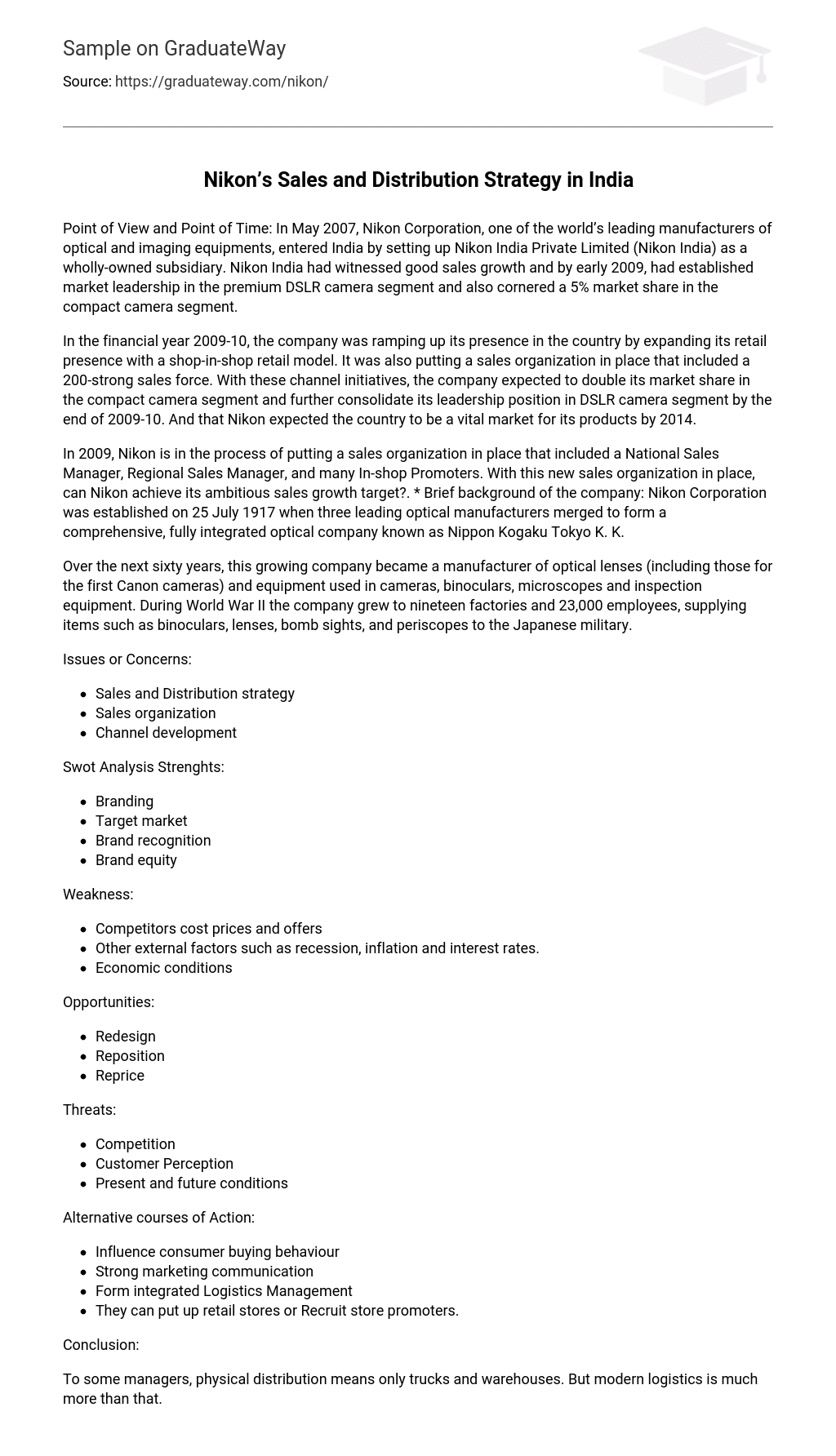Point of View and Point of Time: In May 2007, Nikon Corporation, one of the world’s leading manufacturers of optical and imaging equipments, entered India by setting up Nikon India Private Limited (Nikon India) as a wholly-owned subsidiary. Nikon India had witnessed good sales growth and by early 2009, had established market leadership in the premium DSLR camera segment and also cornered a 5% market share in the compact camera segment.
In the financial year 2009-10, the company was ramping up its presence in the country by expanding its retail presence with a shop-in-shop retail model. It was also putting a sales organization in place that included a 200-strong sales force. With these channel initiatives, the company expected to double its market share in the compact camera segment and further consolidate its leadership position in DSLR camera segment by the end of 2009-10. And that Nikon expected the country to be a vital market for its products by 2014.
In 2009, Nikon is in the process of putting a sales organization in place that included a National Sales Manager, Regional Sales Manager, and many In-shop Promoters. With this new sales organization in place, can Nikon achieve its ambitious sales growth target?. * Brief background of the company: Nikon Corporation was established on 25 July 1917 when three leading optical manufacturers merged to form a comprehensive, fully integrated optical company known as Nippon Kogaku Tokyo K. K.
Over the next sixty years, this growing company became a manufacturer of optical lenses (including those for the first Canon cameras) and equipment used in cameras, binoculars, microscopes and inspection equipment. During World War II the company grew to nineteen factories and 23,000 employees, supplying items such as binoculars, lenses, bomb sights, and periscopes to the Japanese military.
Issues or Concerns:
- Sales and Distribution strategy
- Sales organization
- Channel development
Swot Analysis Strenghts:
- Branding
- Target market
- Brand recognition
- Brand equity
Weakness:
- Competitors cost prices and offers
- Other external factors such as recession, inflation and interest rates.
- Economic conditions
Opportunities:
- Redesign
- Reposition
- Reprice
Threats:
- Competition
- Customer Perception
- Present and future conditions
Alternative courses of Action:
- Influence consumer buying behaviour
- Strong marketing communication
- Form integrated Logistics Management
- They can put up retail stores or Recruit store promoters.
Conclusion:
To some managers, physical distribution means only trucks and warehouses. But modern logistics is much more than that.
Physical Distribution-or marketing logistics-involves planning, implementing, and controlling the physical flow of materials, final goods and related information from points of origin to points of consumption to meet customer demand at a profit. With this Nikon is sure to be the King in his own industry. Recommendations: Nikon must place greater emphasis on logistics for several reasons: First, customer service and satisfaction have become the cornerstones of marketing strategy in many businesses, and distribution is an important customer service element.
More and more, effective logistics is becoming a key to winning and keeping customers. Companies are finding that they can attract more customers by giving better service or lower prices through better physical distribution. On the other hand, companies may lose customers when they fail to supply the right products on time. Second, logistics is a major cost element for most companies. According to one study, American companies spent $670 billion-a gaping 10. % of Gross Domestic Product-to wrap, bundle, load, unload, sort, reload, and transport goods.
About 15% of an average products price is accounted for by shipping and transport alone. Poor physical distribution decision result in high cost. Even large companies sometimes make to little use of modern decision tools for coordinating inventory levels; transportation mode and plant; warehouse, and store locations. Improvements in physical distribution efficiency can yield tremendous cost savings for both the company and its customers.
Third, the explosion in product variety has created a need for improved logistics management. Finally, improvements in information technology have created opportunities for major gains in distribution efficiency. The increased use of computers, point-of-sale scanners, uniform product codes, satellite tracking, electronic data interchange, and electronic funds transfer, allow companies to create advanced systems for order processing, inventory control and handling, and transportation routing and scheduling.





